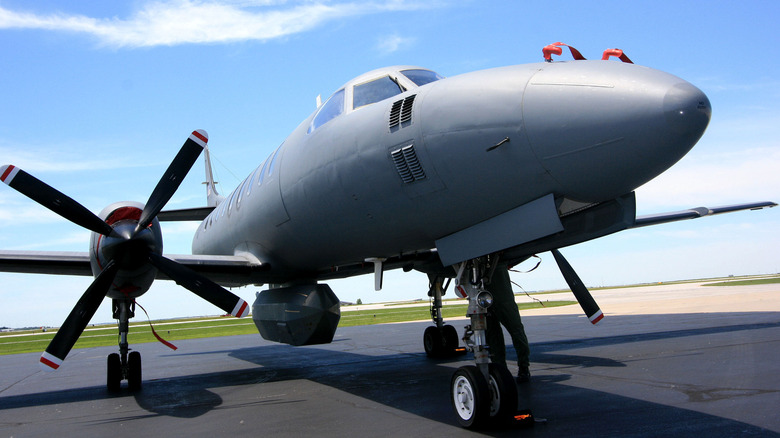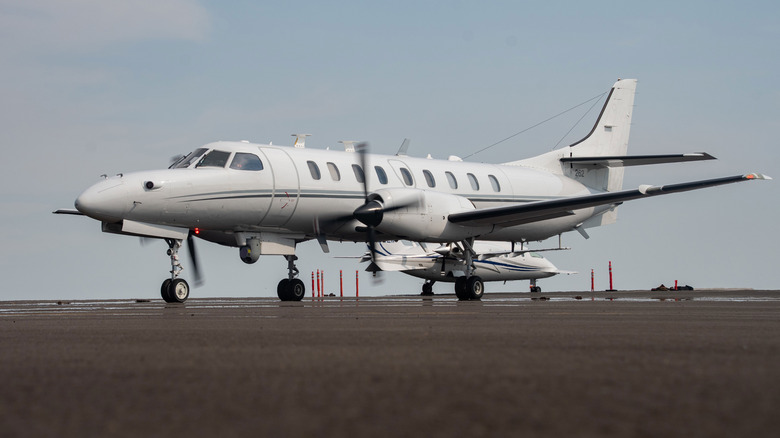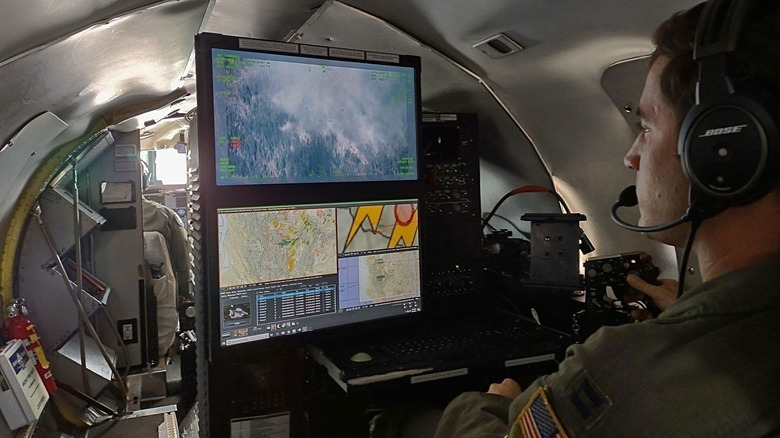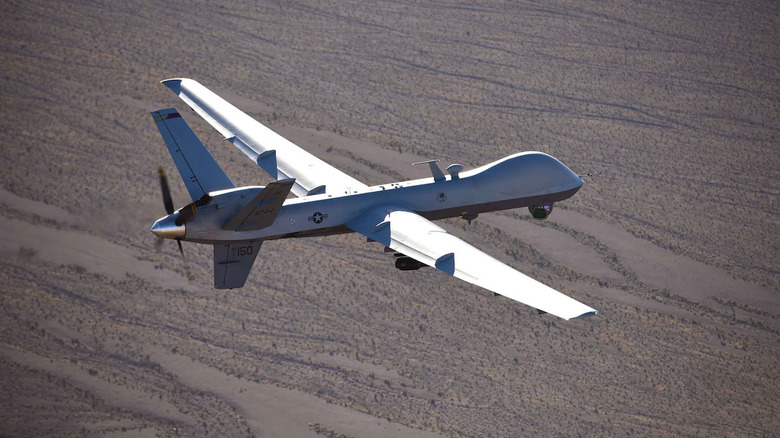RC-26 Condor Surveillance Planes Were Put Into Retirement: Here's Why
With all of the advanced tech possessed by the U.S. military, it may surprise you to learn that a twin-propellor plane from the late 1980s was a critical instrument in catching drug smugglers as recently as 2022. Yet, that's precisely the type of aircraft that the Air Force used to catch drug traffickers until it was officially retired in 2023.
The RC-26 Condor was a civilian airliner converted to a military plane to support security forces. While best-known for its anti-narcotics role in supporting the DEA and state anti-drug taskforces, the plane also played a pivotal role in assisting rescue and recovery efforts as a result of natural disasters like hurricanes and wildfires.
The RC-26 Condor has a long and fairly interesting history that isn't without controversy. In its three decades of use by the Air Force, the plane has been praised by the armed forces while heavily criticized by civilians for its potential role in surveilling protestors. Ultimately, the plane would be phased out and replaced by smaller and smarter technology.
The history of the RC-26 Condor
The U.S. military started using the RC-26 Condor in 1989. Originally introduced as a counter-drug surveillance aircraft, the RC-26 Condor held a civilian classification as the C-26B. This would change in 2005 when the joint Air National Guard and Army National Guard modified its frame to give it its classification as the RC-26B. At this point, the military took official ownership of the Condor, using it in a variety of missions, domestic and abroad.
Altered from a Fairchild Swearingen SA227 Metroliner, the main advantage of the RC-26 Condor was its enhanced surveillance capabilities. With specialized digital cameras and IR video, the aircraft gave real-time surveillance data to units on the ground.
In 2020 and 2021, the National Defense Authorization Act prevented the RC-26 Condor from being retired. Former RC-26 pilot and Illinios Congressman Adam Kinzinger was one of the most vocal representatives rallying to retain the three-decade-old, $30 million-a-year program.
However, no such provision was made in the 2023 National Defense Authorization Act, ending its use and further deployment of the RC-26 Condor. Several final flights for the RC-26 took place toward the end of 2022 and early 2023, with the RC-26 taking its final flight at the 132d Wing in Des Moines, Iowa, on January 27, 2023.
The RC-26 Condor served many uses
Most notably used for anti-drug operations, the RC-26 Condor was capable of identifying and tracking suspects from the air, collected by the plane's sensitive sensors and cameras. The RC-26 Condor was also used in homeland defense, overseas operations, and disaster recovery efforts.
Specifically, the plane was used in Hurricane Katrina and Hurricane Harvey, as it was able to identify survivors in need of rescue. Similarly, the aircraft was deployed in 2007 after the devastating wildfires in California, as well as the Deepwater Horizon oil rig explosion in 2010. The aircraft possessed sensors that could detect fires up to 80 miles away, and extensive onboard communications capabilities enabled the craft to communicate on a wide band of frequencies.
A variation of the plane, the Block 25R model, was also deployed in surveillance missions in Afghanistan and Iraq, as this version of the RC-26B was equipped with signals intelligence (SIGINT), which also enabled tapping into enemy communication systems and radar.
RC-26 Condor was accused of spying on American citizens
In 2020, several RC-26 Condors were seen flying over several U.S. cities, including Washington, Minneapolis, Phoenix, and El Dorado Hills, California, purportedly watching citizens protesting against police brutality in the wake of the murder of George Floyd. Vice would later obtain footage of a Minneapolis Police Department RC-26 recording of the protests from thousands of feet up.
According to the New York Times, the National Guard failed to get the required approval to use the aircraft from then-Defense Secretary Mark Esper, as the RC-26 was mistakenly not deemed an "intelligence aircraft."
Ultimately, it was claimed that the planes were deployed to oversee crowd size for threats of fire and damage to property, not spying on citizens. They reported the onboard camera of the RC-26 isn't sophisticated enough to use for facial recognition or to read license plates, lending credibility to the findings from the Pentagon.
Drones replaced the RC-26
Today, the Air Force uses a combination of unmanned drones like General Atomics' MQ-9 Reaper to do what RC-26 did. Not only does the Reaper have modern technology, but it's also remotely piloted and can be deployed for 24-hour missions crewed by personnel on the ground.
Depending on the mission, drones like the Reaper can also come equipped with specialized kits made for specifical mission scenarios. This combines to make the drones more efficient and safer, as manned aircraft run higher risks of pilot mishaps. In addition, drones are also more mobile than the outdated design of the 1980s RC-26.
Even though it doesn't rank as one of the most expensive military aircraft ever, and the RC-26 Condor was certainly useful for its time, it would appear as if new drone technology is cheaper, safer, and more effective in just about every way.




